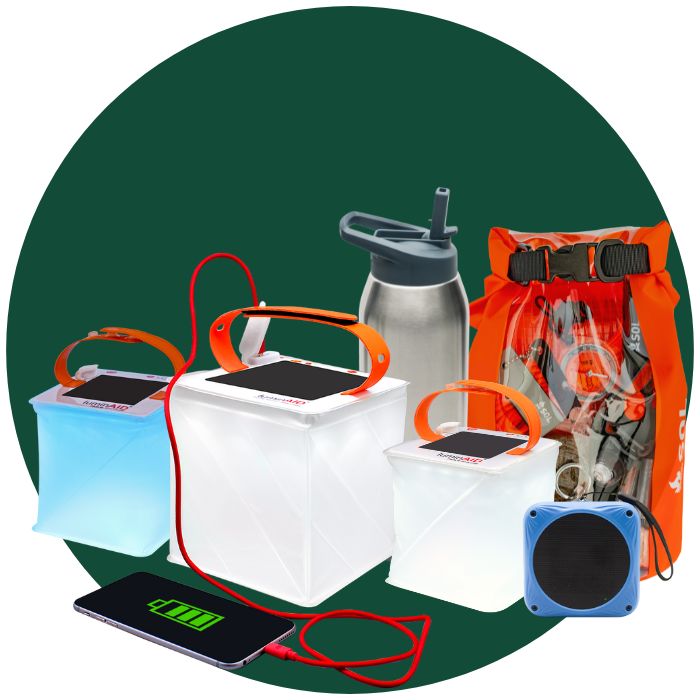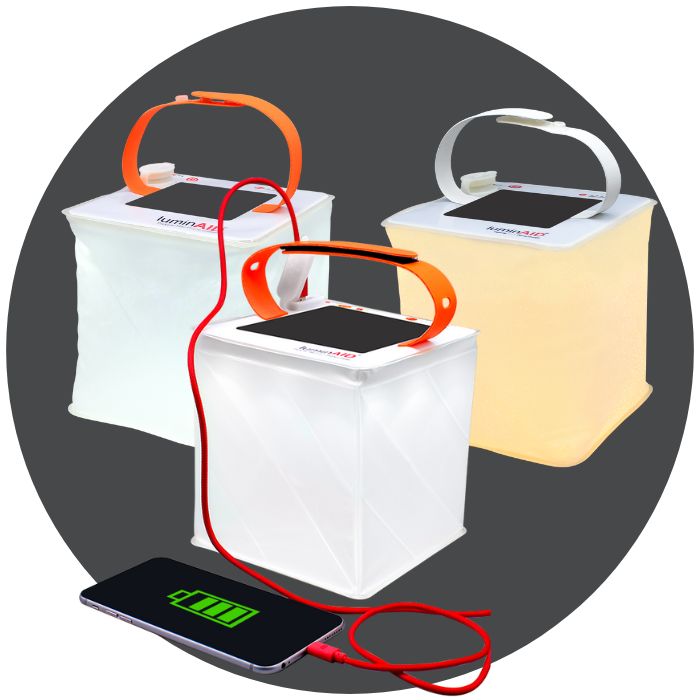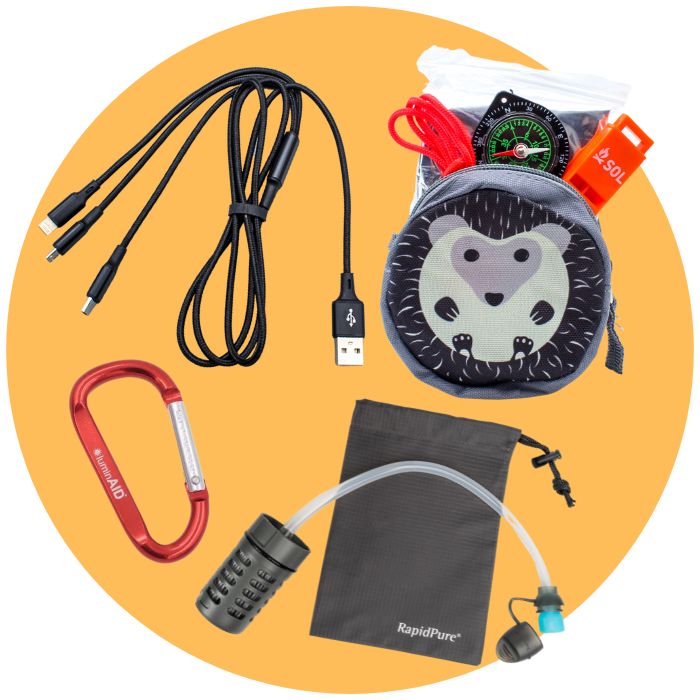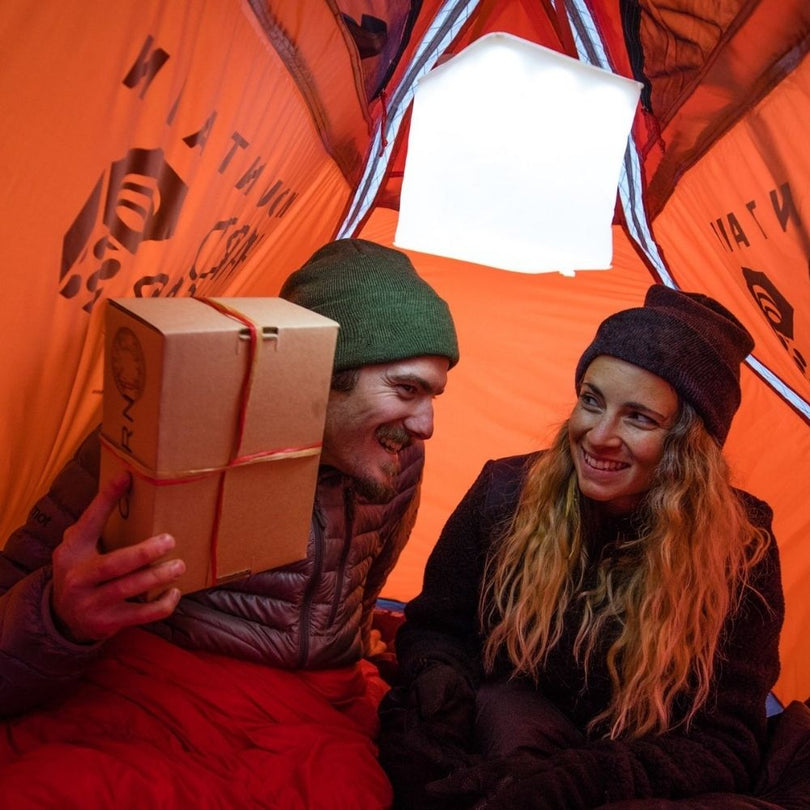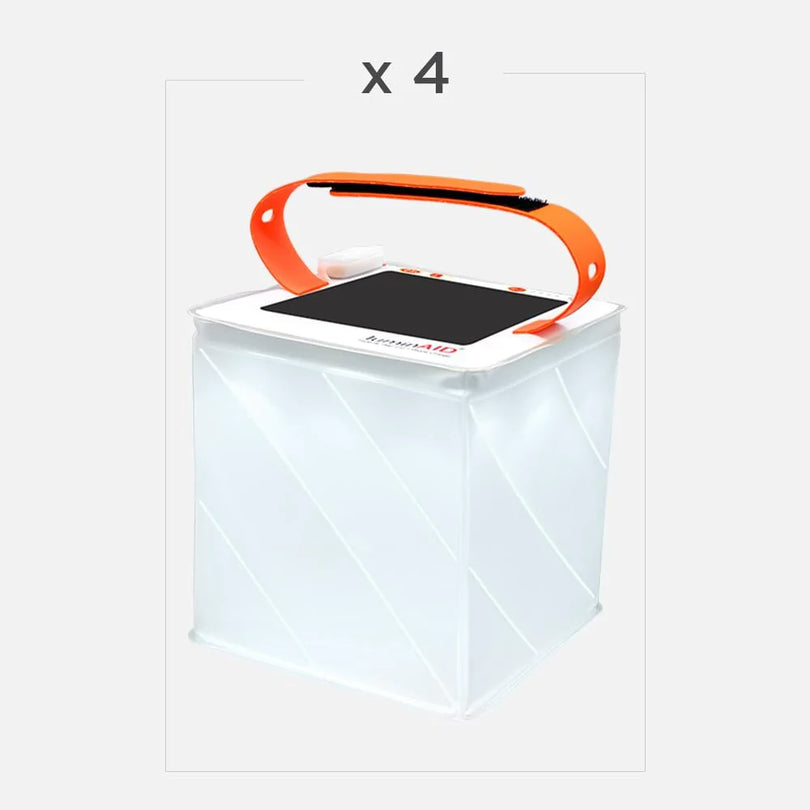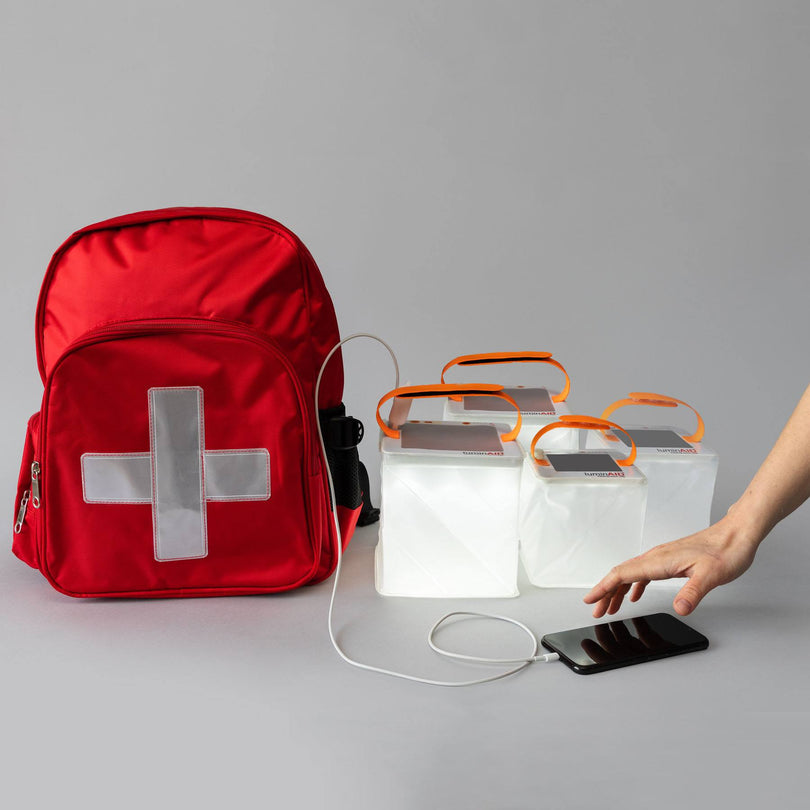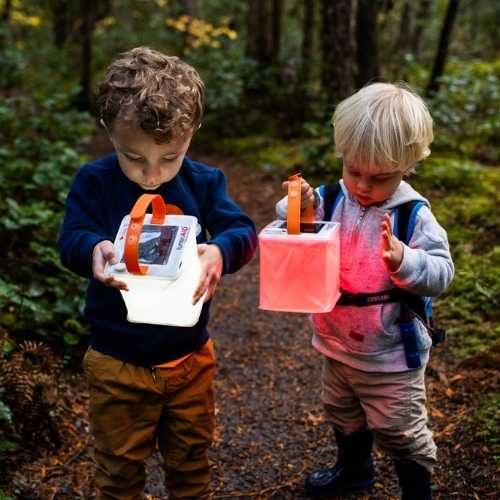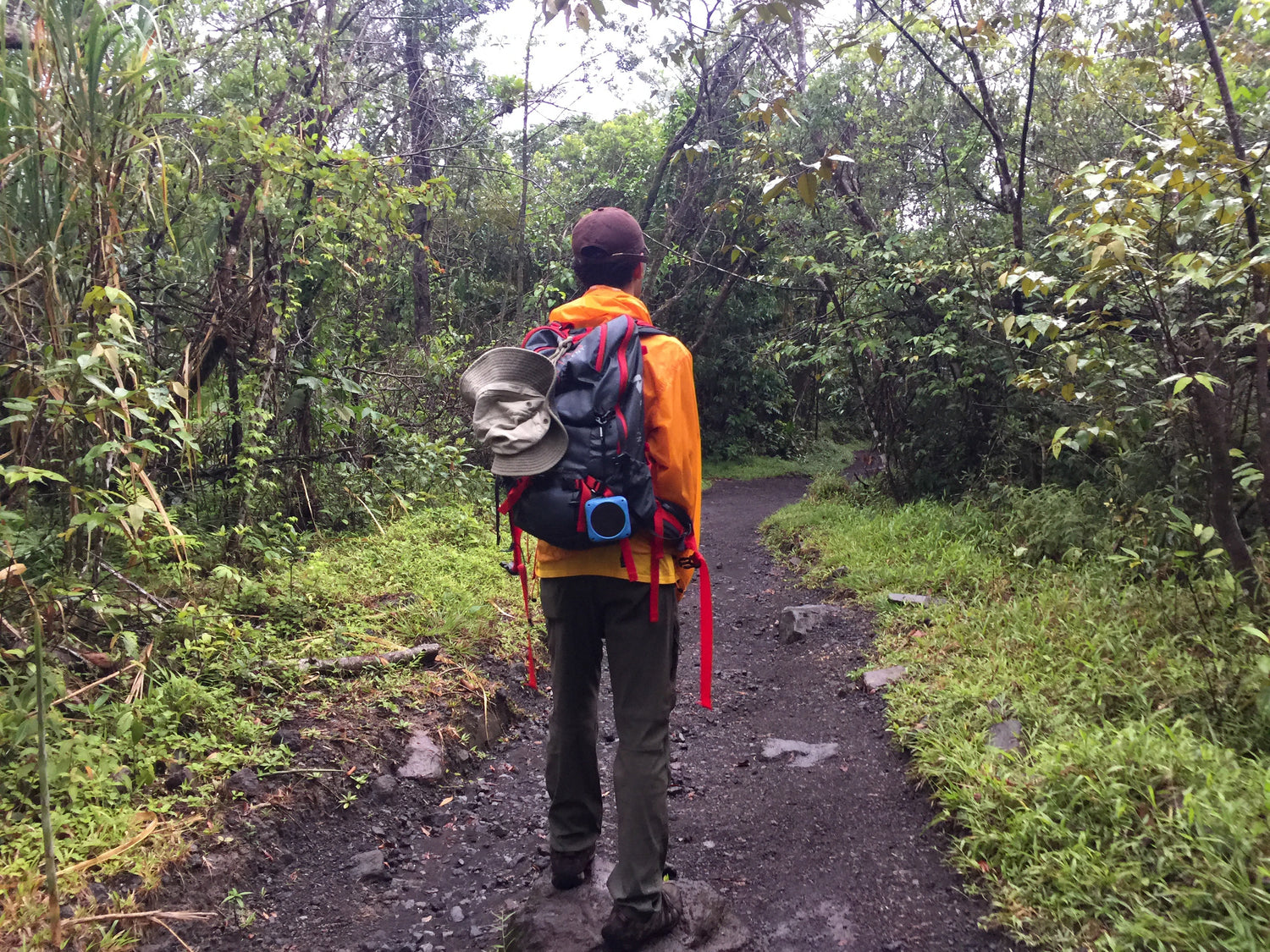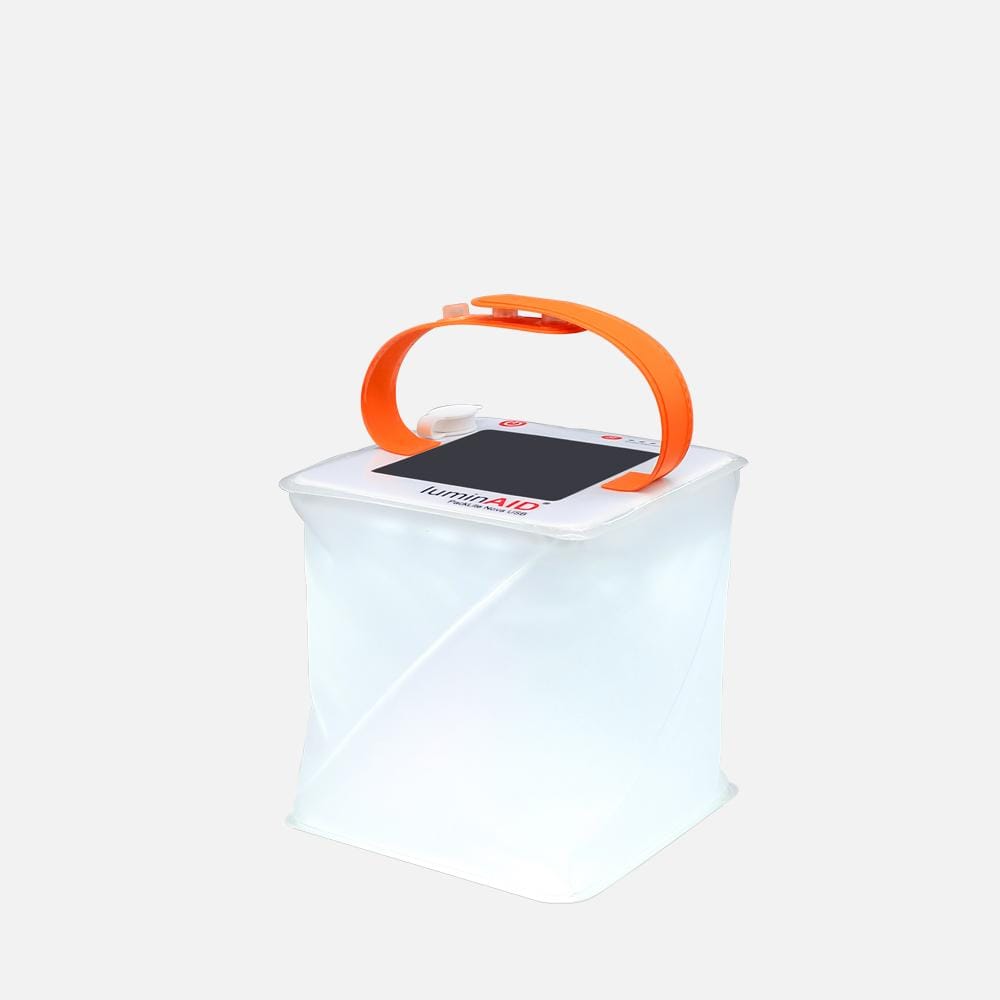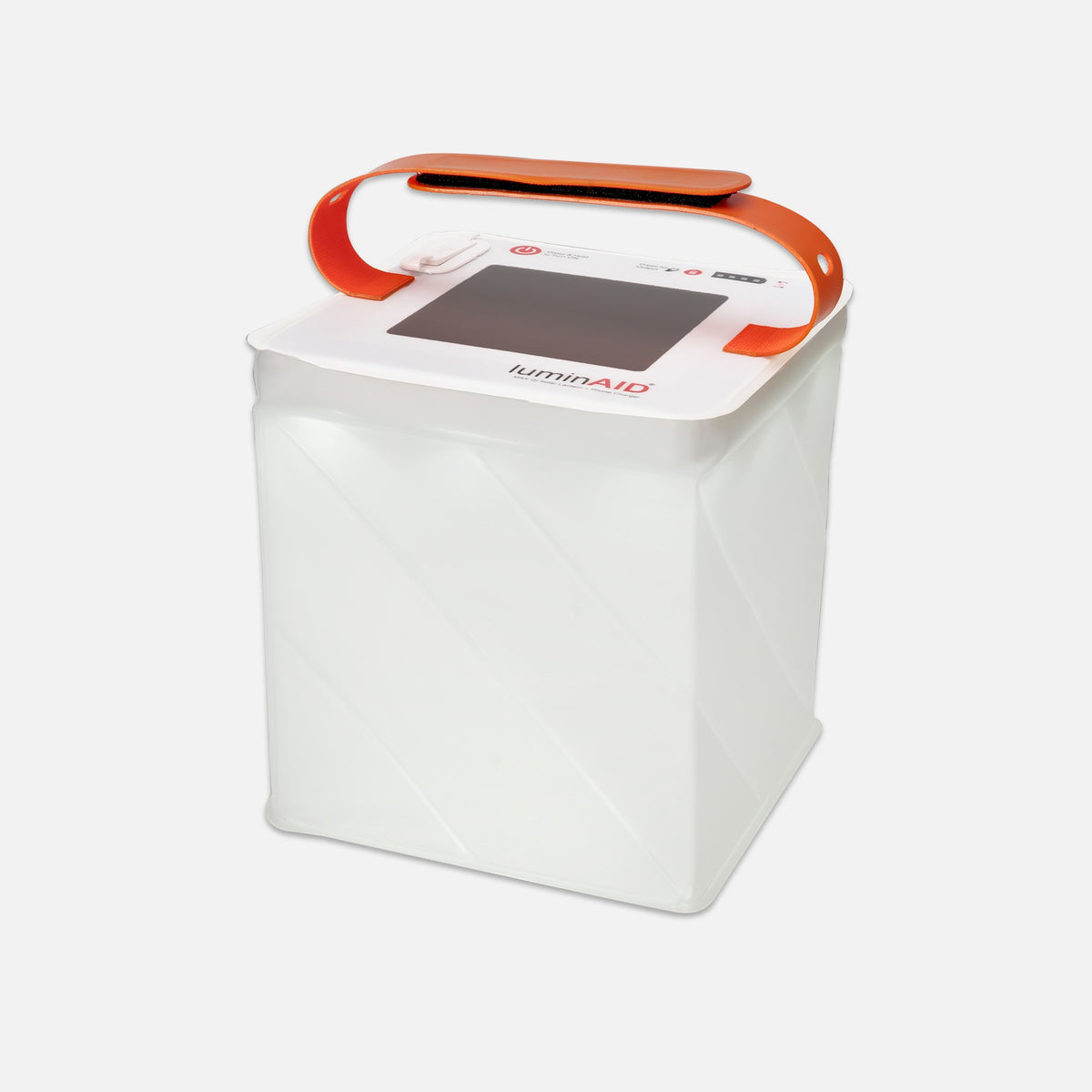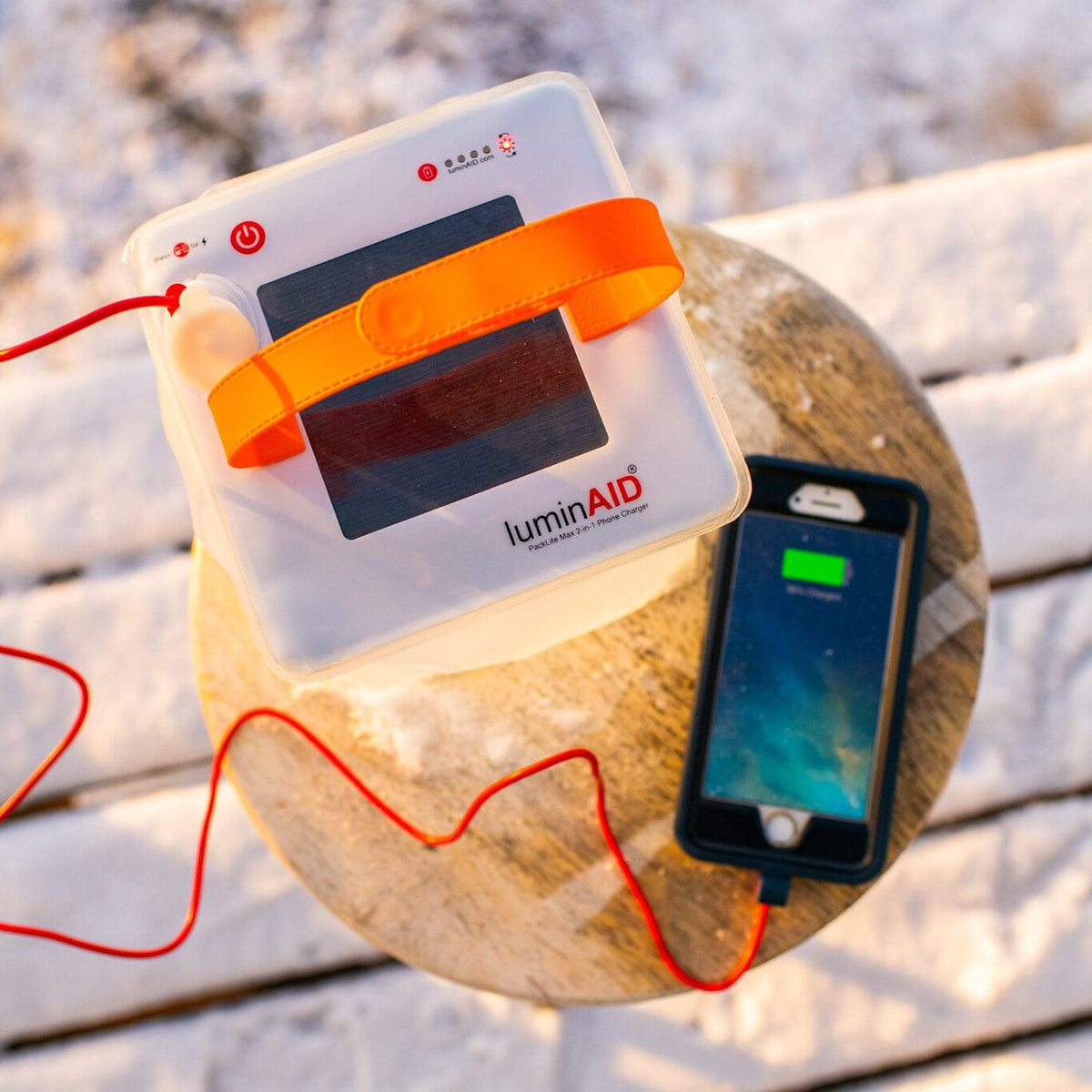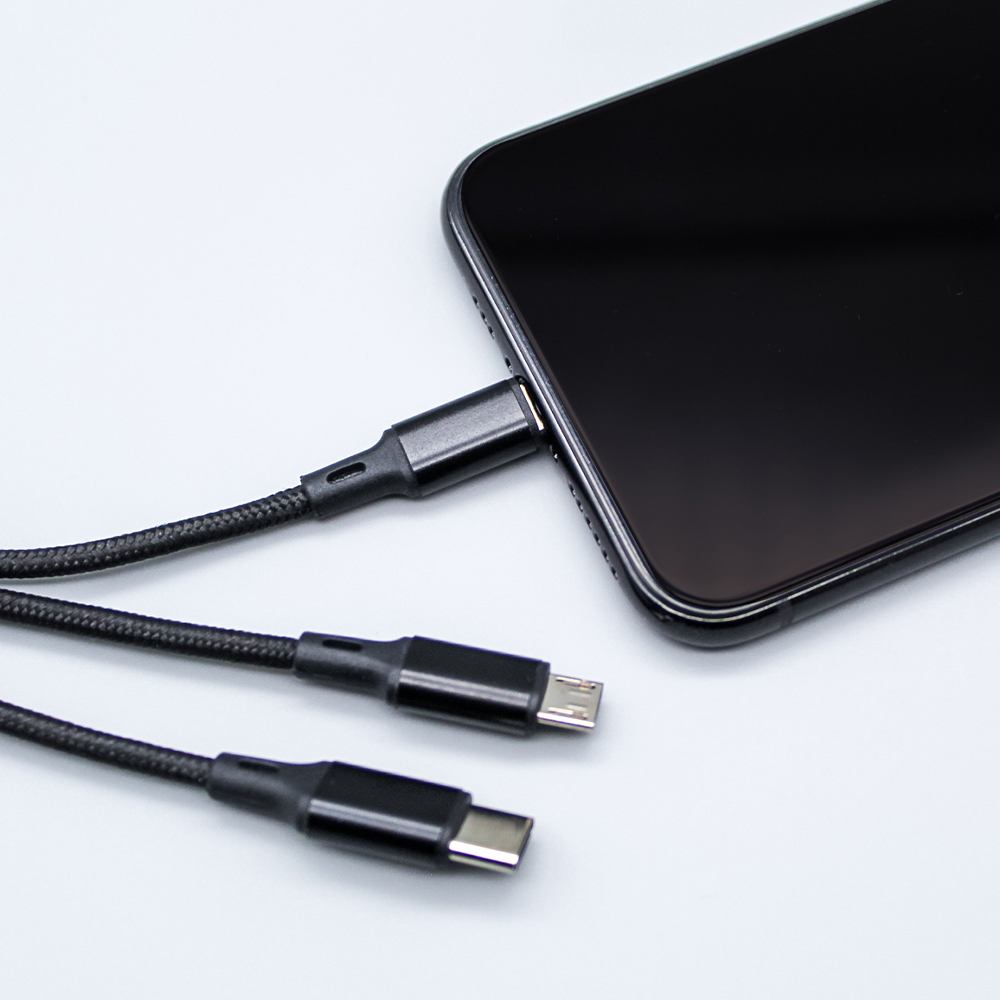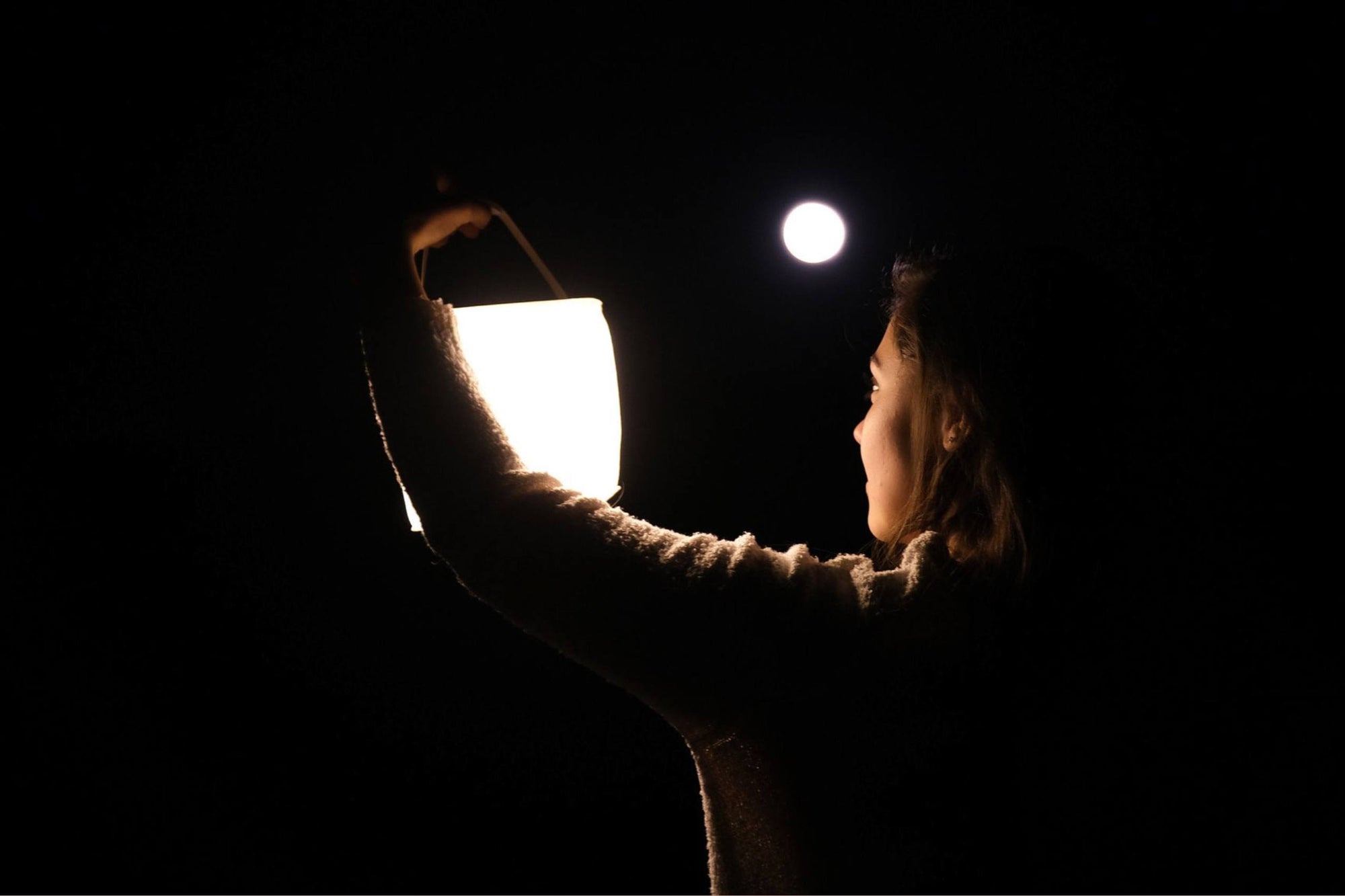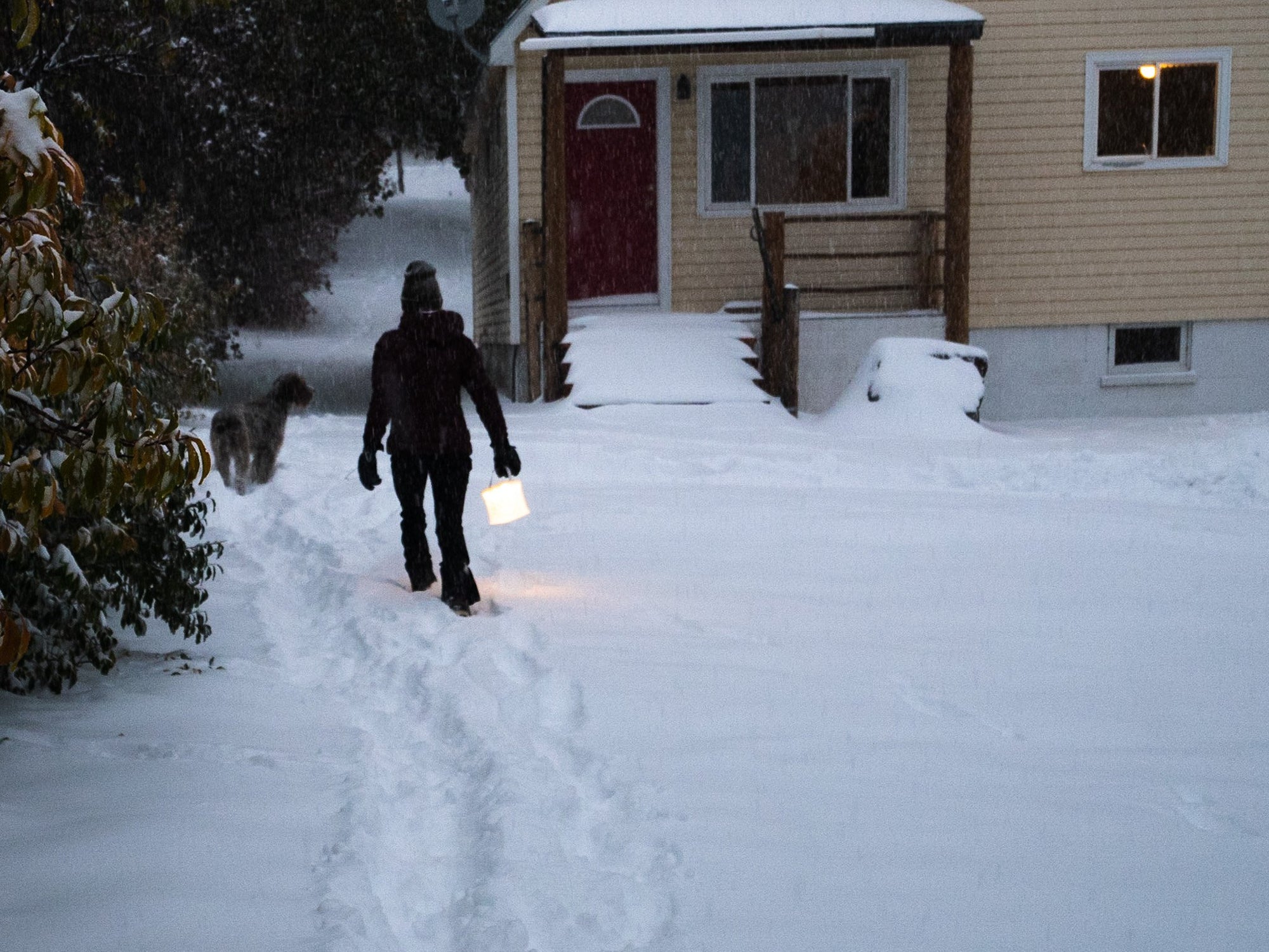Al fresco aficionados and first-time campers can both appreciate a comfortable camping experience. The outfit you choose can make a big difference in how enjoyable your camping trip is. Dress too warm, and you’ll overheat, or not warm enough, and you risk hypothermia in cold weather. Luckily, with this comprehensive guide, you’ll have everything you need to conquer your next camping adventure.
What to wear while camping
Whether you’re going solo hiking or camping with friends, what you wear can make or break any outdoor trip.

Dress for the weather and season
One of the best ways to ensure you’re adequately dressed for your camping trip is to plan ahead and research what the weather forecast will be like at your destination.
Considering the season alone will give you a good starting point, such as whether you should dress in multiple layers or wear breathable fabrics to combat the hot weather.
Dress for the activities you will be doing
Activity ideas for the great outdoors are seemingly limitless – summiting your favorite mountain, swimming in a serene lake, or fishing your secret spot – but they can quickly run amok without the proper attire. Make an itinerary, and plan a special outfit if the activity calls for it.
You may get dirty
Things sometimes go differently than planned when camping or hiking, and getting dirty is almost guaranteed when you're exploring the great outdoors. Be sure to pack some extra clothes just in case you get muddy.
Choose the right fabric
The fabric you choose for each layer can substantially impact your warmth and comfort on your trip. Here are the most common types of fabrics and the pros and cons of each.
Cotton
Cotton is great for wearing around your campsite or while car-camping, but it should generally be avoided when engaging in physical activities like hiking to your campsite. Cotton is more breathable than other fabrics but is not as great for insulation or moisture-wicking capabilities.
It’s recommended to avoid using cotton as a base layer, especially during cold or wet seasons, since it absorbs moisture and takes longer to dry.

Synthetics
Nylon and polyester are usually the most common synthetic fabrics and for a good reason. They’re often more durable than natural materials and can dry more quickly. For this reason, synthetic fabrics are great for outer layers such as pants, shirts, and jackets.
While fleece jackets may sound like they’re made from sheep’s wool, they’re made from synthetic polyester. They are a great option if you’re looking for cold-weather outerwear.
However, be advised that synthetic clothing is more prone to odors and may not feel as warm as other fabrics.
Wool
Although it was once considered the “scratchiest” fabric, wool has improved substantially in recent years.
Ultra-fine merino wool is itch-free, breathable, moisture-wicking, and excellent at staying odor-free. These characteristics make it a fantastic material for a pair of socks and base layers; however, these advantages come at a higher price point than other fabrics and may still cause some discomfort to sensitive skin.
Bamboo
Bamboo may not be the first plant material you’d imagine being used for clothing, but it’s actually one of the softest fabrics on the market. It also has antibacterial properties, is less likely to wrinkle, and it’s hypoallergenic, so it’s great for even the most sensitive skin!
Besides being soft, it’s also breathable, has great moisture-wicking abilities, and blocks nearly 97% of UV radiation, making it great for a summer adventure.
For those looking for winter outfits, bamboo fabric can still be a top choice. It’s a powerful insulator and will keep you warmer than a cotton base layer, making bamboo a leading contender for any season.
Think about the layers of clothing
Although the weather may be cold on the trails, you’re likely going to sweat a bit. With proper layering, you can shed an extra layer when you get warm and put it back on if you get cold.
With proper layering, you can choose suitable materials and types of clothing to keep you comfortable and happy.
A good rule of thumb is that the base layer keeps you dry, the mid-layer keeps you warm, and the outer layer protects you from the elements.
Base layer
When picking a base layer, the fabrics you choose are especially important. Usually, you’ll want to choose quick-drying and moisture-resistant materials.
Underwear, bra, tank top
For underwear, bras, and tank tops, synthetic fabrics like nylon and polyester should be your first choice to keep moisture away from your body to prevent unwanted chafing and rashes.
Natural fibers like cotton should be especially avoided for this reason. Additionally, cotton takes longer to dry, making you feel cold and damp from sweat and snow.
Pack one pair of underwear for each day of planned camping since they’re small and easy to pack. Two pairs should suffice for those looking to backpack for longer durations where reducing weight is essential, and you can rinse them as needed. Also, choose looser-fitting underwear to allow for more breathability.
Consider wearing long underwear as your base layer if camping during colder temperatures. They do a great job of keeping a layer of warmth close to your body.
For warmer weather, moisture-wicking tank tops can be a great way to beat the heat and stay fresh with a cool base layer.
T-shirt, sweat pants, short pants
A tee made of quality synthetic materials can be great for any season; use it as a base layer in colder climates or as a standalone shirt for warmer regions. Ideally, you should bring one to two t-shirts for your trip, and you can wash it as needed (tips for washing clothes on-site will be covered later).
Sweat pants aren’t usually what people associate with camping or hiking, but they’re a comfortable option for extra warmth on cold nights. Athletic joggers are also a light and breathable choice for warmer months.
Temperatures can change quickly in the great outdoors, and it’s not always ideal to change between shorts and pants throughout the day. Luckily, short pants are a simple solution to this. With outdoor activities in mind, they’re made from breathable synthetic materials and are easy to change between pants and shorts as you need.
Consider a good pair of cargo hiking pants to maximize carrying capacity. They have extra pockets that are useful for taking tools and essential items on you and are breathable for warmer weather.
Mid-layer
After choosing your base layer, your mid-layer comes next. This is where your heat will come from if you’re camping during the cooler months and summer afternoons.
Sweater, hoodie
There are several options available for mid-layers depending on your needs, from jacket types and insulation materials, but choosing the right one can be easy. You should bring two mid-layers since they're usually light and easy to pack. Similar to base layers, look for fabrics that expel moisture rather than absorb it to keep you dry and comfortable in tandem with your base layer.
Soft-shell and fleece mid-layers are reliable options since they’re lightweight and versatile for day or night use. If you’re expecting wet or snowy conditions, a water-resistant soft shell jacket will be better at keeping you dry without needing an outer layer.
While down and synthetically insulated jackets may look bulkier than other jacket types, they compress easily and are great insulators for camping in colder weather.
Outer layer
While your base and mid-layers are where your heat comes from, the outer layer will be your primary protection from the environment and weather conditions, so prepare carefully.

Rain jacket, pants
Rain jackets are a great outer layer to keep on hand since they’re lightweight, breathable, and versatile for any season. They protect you from getting chilled in rainy seasons and from harmful UV rays.
With several options to choose from, such as waterproof jackets if you’re expecting heavy rain or water-resistant for general use, you’ll be sure to find the right one you need.
Rain pants also provide protection from wind and rain without weighing you down too much. Since they’re lightweight, they can easily roll into your pack when they’re not in use.
Sleepwear
Sleeping in jeans at home isn't comfortable, nor is sleeping in sweaty camping clothes after a long outdoor day. It's a good idea to keep a spare shirt, bottoms, and socks just for sleeping. If temperatures drop, throw on a mid-layer jacket to warm you up.
Comfortable outfits
Now that you know the basics for camping wear, here are some starter outfit ideas you can use for any season. Remember: you should choose comfort over fashion when on an outdoor adventure. Your Instagram photos will look great if you feel great.
Camping outfit in the spring
While you likely won’t experience freezing temperatures in spring, you are more likely to run into rain showers and colder weather on your camping trip, so be sure to check the weather ahead of time.
For your top, bring a synthetic t-shirt or tank top and a fleece jacket for warmth, and a wool base-layer shirt for nighttime use. Pair it with hiking pants, leggings, and wool socks to stay warm and dry. For your head, bring a beanie or winter hat to conserve extra warmth.
If you are expecting precipitation, bring rain gear like rain pants and a rain jacket for your outer layer. Keep a pair of lightweight hiking boots and spare wool socks to keep your feet dry on muddy terrain.
Camping outfit in the summer
Summer camping is great because you’ll have less drastic weather changes, meaning you can pack less clothing. Hiking shorts or short pants and a synthetic t-shirt or tank top will give you the breathability you need, and wool socks will keep your feet dry from sweat.
Be sure to protect your head, face, and eyes from the sun with a summer hat and sunglasses.
You should also bring a lightweight outer layer like a windbreaker if you need extra warmth or protection from the elements.
Camping outfit in the fall
In the fall, you can bring similar clothing to a spring camping trip, but focus primarily on warmer clothing and extra layers for staying warm after sunset. In addition to a synthetic base layer for day use, bring a wool undergarment for frigid days.
Camping outfit in the winter
Paying close attention to weather forecasts is necessary for winter camping due to the variability in temperature and precipitation. So staying warm can become a challenge in freezing weather.
Start with wool or synthetic undergarments and athletic joggers for your base layer, and use a fleece jacket to stay warm on the trails. If you need more warmth at your campsite, you can wear a down-insulated coat and a pair of fleece gloves. A winter hat is also recommended.
Keeping your feet warm and dry is vital in the winter, especially if there’s snow. Pack a pair of hiking gaiters, mid-weight hiking boots, and spare wool socks.
Snow on the ground can be damaging to unprotected eyes, so be sure to wear sunglasses to prevent snow blindness.

Camping laundry
Washing laundry on a camping trip is surprisingly easy and, with limited clothes, takes little time. Rinsing them in water should do the trick if you’re camping near a lake, river, or stream. If you’re using a natural water source, do not use detergent, as it can harm wildlife.
If you don’t have a running water source nearby, you can use a bucket filled with water or portable washing bags like the Srubba. Once your clothes are washed and rinsed, hang them to dry or dry them with a towel. This is where you’ll see a difference with moisture-wicking fabrics since they will dry quickly.
Make sure you leave no-trace. Be sure to dispose of dirty water 200 feet from any natural water sources and water spigots in a cathole, and only use biodegradable detergents when necessary.
What not to wear while camping
Knowing what to pack on a camping trip is crucial, but knowing what not to bring is just as important.
You should leave your jeans at home; they’re heavy and bulky, and the cotton fabric makes them uncomfortable for hiking and camping.
Shoes without proper support are dangerous on the trails as they offer little protection from sprains and are uncomfortable on rough terrain. Avoid street shoes and flip-flops, and invest in a quality pair of hiking boots.
If you have a favorite piece of jewelry, consider leaving it at home when you're camping to avoid accidentally losing it.
Don’t wear clothes that are too tight or too loose. Tight clothing can make it hard to move when mobility is needed, and loose clothing can get caught easily on trees, rocks, and plants.
Summary
Knowing what to wear for a camping trip requires a lot of planning, but understanding the basics and how they work together is the easiest way to become a packing pro. Start with expected temperatures, locations, and precipitation in mind, and build your outfit from there. Bring some spare clothing in case of emergencies, and have confidence in your choices. With this quick guide, you’ll be ready for any camping adventure!
Need packing list ideas? Check this list out! Download it here.


